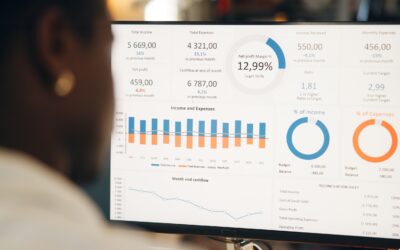The Problem With Guessing Who Your Donors Are
Every nonprofit thinks they know their donors. You’ve probably even said it—“Our typical donor is a middle-aged woman who cares about education.” Okay, cool. But how do you know that? Is it data or just a vibe?
Here’s the truth: Most donor personas are built on gut feelings and office anecdotes. Real donor personas are built on hard data—the kind that doesn’t flinch under scrutiny. When you ground your understanding in actual behavior, giving patterns, and motivations, you stop guessing and start strategizing.
Why Donor Personas Actually Matter
Donor personas aren’t just a branding exercise. They’re the foundation of smarter fundraising. When you know who gives, why they give, and how they engage, you can craft messages that actually land.
A strong persona changes everything:
- Your campaigns become laser-targeted.
- Your emails get opened (and acted on).
- Your donors feel seen, not sold to.
And when donors feel understood, retention skyrockets. If you’ve ever studied how to create a donor lifecycle plan, you already know—understanding behavior at each stage is the secret to long-term giving.
Step 1: Start With the Right Data Sources
The first mistake most nonprofits make? They open a blank Google Doc and start describing “Mary, the loyal donor.” That’s fiction writing, not fundraising. Start with data. Here’s what you need:
- CRM Data: Demographics, giving frequency, preferred channels, average donation size.
- Website Analytics: Where do visitors come from? What pages drive conversions?
- Email Metrics: Who clicks what? Who never opens?
- Survey Responses: Ask donors why they give and what impact matters to them.
- Social Insights: What content gets shared? What language gets engagement?
You’re not building personas to sound clever—you’re building them to raise money. So ditch the fluff and anchor everything in evidence.
Step 2: Segment Your Donors by Behavior
Forget broad demographics for now. Age and gender are lazy shortcuts. You want *behavioral* segments.
Here’s a simple framework:
- New Donors: First-time givers who need reassurance and onboarding.
- Recurring Donors: Your loyal backbone who respond to impact stories and recognition.
- Lapsed Donors: People who once gave but ghosted. (You’ll find insights on this group in how to learn from lapsed donors.)
- Major Donors: They care about outcomes, not transactions. Think ROI, legacy, and exclusivity.
When you start grouping by *what they do* instead of *who they are*, the messaging practically writes itself.
Step 3: Identify Key Traits That Actually Drive Action
Now it’s time to pull out the threads that truly define your donor segments. Look for things like:
- Average time between gifts
- Preferred donation channel (email, mobile, event)
- Emotional triggers (hope, impact, urgency)
- Response to incentives (matching gifts, milestones, peer recognition)
This is where you stop describing people and start decoding motivation. Data reveals behavior, but emotion reveals intention.
Step 4: Add Real-World Color
Once you’ve got the structure, it’s time to humanize it. This is the part where you take raw data and give it life. But keep it grounded in truth.
Example:
Instead of “Mary loves helping kids,” write “Mary checks her email during her lunch break, and every time she sees a child smiling in a photo, she clicks donate.”
That level of texture gives your team something tangible to write to, design for, and measure against.
Step 5: Look for Hidden Donor Archetypes
You’ll probably find a few repeatable patterns—archetypes that transcend demographics. Most nonprofits discover variations of these:
- The Loyal Sustainer: Gives monthly, values transparency, reads every email.
- The Event Enthusiast: Loves galas and group moments, not quiet campaigns.
- The Emotional Giver: Acts fast when stories hit hard but drifts without updates.
- The Data Donor: Wants to see measurable impact and hates vague metrics.
- The Social Amplifier: Shares your posts more often than donating—but their influence drives reach.
You’ll notice none of these are based on gender or age. They’re based on psychology and behavior—the real engines behind giving.
Step 6: Validate Your Personas Against Performance
Personas aren’t final until they’re proven. Test them. Segment a campaign by persona type and watch how each responds. Do your “Loyal Sustainers” open your recurring email? Do “Event Enthusiasts” click your RSVP links? If not, adjust.
This iterative mindset is what separates good fundraisers from great ones. You’re not chasing perfection—you’re calibrating for truth.
Step 7: Share Your Personas Across Teams
The biggest mistake? Keeping personas locked in a marketing folder. Everyone needs to know who they’re serving—development, communications, even program staff.
When your entire team internalizes who your donors are, your messaging becomes consistent. The appeal letters, the Instagram captions, the thank-you emails—they all start speaking the same emotional language.
Think of personas as internal culture tools, not just marketing assets.
Step 8: Update Regularly—Because Donors Evolve
Your donors aren’t static, and your personas shouldn’t be either. Economic changes, global events, and digital trends all shift behavior. What motivated people to give in 2020 won’t necessarily work in 2025.
Revisit your data quarterly. Look at how different cohorts evolve over time. If you’ve read how donor cohort analysis strengthens retention, you already know that behavior tracking over time exposes trends early.
You don’t have to rebuild personas from scratch every year—just keep them alive and accurate.
Step 9: Align Personas With Messaging and Campaign Design
This is where the magic happens. Once your personas are solid, use them to drive every part of campaign creation:
- Copywriting: Match tone to persona. Data Donors want clear outcomes; Emotional Givers crave heartfelt storytelling.
- Design: Visuals should reflect your audience. Younger social donors respond to movement and action. Older donors prefer clarity and warmth.
- Call-to-Action: “Join us” works for community-focused givers; “Be the reason” resonates with those driven by personal impact.
You’re not writing to everyone—you’re writing to *someone.*
Step 10: Turn Personas Into Donor Journeys
Once your personas are clear, map their entire journey. What does awareness look like? What triggers their first gift? What keeps them giving?
Building this map turns personas into predictable systems. You’ll spot the emotional checkpoints—curiosity, connection, commitment—and know exactly what message to send at each stage.
It’s the ultimate blend of art and science: empathy guided by analytics.
The Payoff: Why Real Personas Outperform Assumptions
When you switch from imaginary donors to data-backed personas, everything changes:
- Your appeals feel more authentic because they’re grounded in real behavior.
- Your campaigns waste less money because they’re focused on high-probability givers.
- Your team stops arguing over “what might work” and starts acting on evidence.
The end result? Higher retention, stronger lifetime value, and donors who actually feel seen.
And when donors feel seen, they don’t just give—they advocate, volunteer, and recruit others to the cause.
The Final Takeaway
Donor personas aren’t fluff—they’re the backbone of modern fundraising. Done right, they give your entire organization a shared lens for understanding and inspiring generosity. Done wrong, they’re just fictional characters collecting digital dust.
Start with data. Layer on empathy. Update constantly. Because when you truly understand who’s giving and why, your fundraising stops being guesswork—and starts being unstoppable.




0 Comments